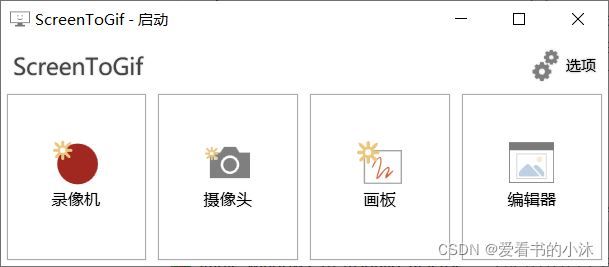这篇文章主要介绍了C++如何实现截图截屏,具有一定借鉴价值,感兴趣的朋友可以参考下,希望大家阅读完这篇文章之后大有收获,下面让小编带着大家一起了解一下。
如何使用Microsoft Windows操作系统中的Print Screen(打印屏幕)键
(1)Print Screen键
按下之后,截取整个屏幕的画面到剪切板里。可以复制到其他软件里,比如系统的画图工具,Office Word等。
(2)Alt+Print Screen组合键
按下之后,截取当前活动窗口的画面到剪切板里。


按下该组合键之后,使用鼠标在屏幕上画出想要截取的矩形区域,自动保存到系统剪切板里。

ffmpeg -i “输入视频” -fflags nobuffer -t 60 -ss 0 “输出地址”
说明:代表截取输入视频从0秒到60秒的片段,保存到输出地址。
-ss n : 起始时间为第n秒
-t n : 总共截取的片段时长为n秒
运行后会生成截图: out1.jpg out2.jpg out3.jpg …
ffmpeg -i fight.mp4 -r 1 -t 200 -ss 1 -f image2 out%d.jpg


https://docs.microsoft.com/en-us/windows/win32/gdi/capturing-an-image
int CaptureAnImage(HWND hWnd)
{
HDC hdcScreen;
HDC hdcWindow;
HDC hdcMemDC = NULL;
HBITMAP hbmScreen = NULL;
BITMAP bmpScreen;
DWORD dwBytesWritten = 0;
DWORD dwSizeofDIB = 0;
HANDLE hFile = NULL;
char* lpbitmap = NULL;
HANDLE hDIB = NULL;
DWORD dwBmpSize = 0;
// Retrieve the handle to a display device context for the client
// area of the window.
hdcScreen = GetDC(NULL);
hdcWindow = GetDC(hWnd);
// Create a compatible DC, which is used in a BitBlt from the window DC.
hdcMemDC = CreateCompatibleDC(hdcWindow);
if (!hdcMemDC)
{
MessageBox(hWnd, L"CreateCompatibleDC has failed", L"Failed", MB_OK);
goto done;
}
// Get the client area for size calculation.
RECT rcClient;
GetClientRect(hWnd, &rcClient);
// This is the best stretch mode.
SetStretchBltMode(hdcWindow, HALFTONE);
// The source DC is the entire screen, and the destination DC is the current window (HWND).
if (!StretchBlt(hdcWindow,
0, 0,
rcClient.right, rcClient.bottom,
hdcScreen,
0, 0,
GetSystemMetrics(SM_CXSCREEN),
GetSystemMetrics(SM_CYSCREEN),
SRCCOPY))
{
MessageBox(hWnd, L"StretchBlt has failed", L"Failed", MB_OK);
goto done;
}
// Create a compatible bitmap from the Window DC.
hbmScreen = CreateCompatibleBitmap(hdcWindow, rcClient.right - rcClient.left, rcClient.bottom - rcClient.top);
if (!hbmScreen)
{
MessageBox(hWnd, L"CreateCompatibleBitmap Failed", L"Failed", MB_OK);
goto done;
}
// Select the compatible bitmap into the compatible memory DC.
SelectObject(hdcMemDC, hbmScreen);
// Bit block transfer into our compatible memory DC.
if (!BitBlt(hdcMemDC,
0, 0,
rcClient.right - rcClient.left, rcClient.bottom - rcClient.top,
hdcWindow,
0, 0,
SRCCOPY))
{
MessageBox(hWnd, L"BitBlt has failed", L"Failed", MB_OK);
goto done;
}
// Get the BITMAP from the HBITMAP.
GetObject(hbmScreen, sizeof(BITMAP), &bmpScreen);
BITMAPFILEHEADER bmfHeader;
BITMAPINFOHEADER bi;
bi.biSize = sizeof(BITMAPINFOHEADER);
bi.biWidth = bmpScreen.bmWidth;
bi.biHeight = bmpScreen.bmHeight;
bi.biPlanes = 1;
bi.biBitCount = 32;
bi.biCompression = BI_RGB;
bi.biSizeImage = 0;
bi.biXPelsPerMeter = 0;
bi.biYPelsPerMeter = 0;
bi.biClrUsed = 0;
bi.biClrImportant = 0;
dwBmpSize = ((bmpScreen.bmWidth * bi.biBitCount + 31) / 32) * 4 * bmpScreen.bmHeight;
// Starting with 32-bit Windows, GlobalAlloc and LocalAlloc are implemented as wrapper functions that
// call HeapAlloc using a handle to the process's default heap. Therefore, GlobalAlloc and LocalAlloc
// have greater overhead than HeapAlloc.
hDIB = GlobalAlloc(GHND, dwBmpSize);
lpbitmap = (char*)GlobalLock(hDIB);
// Gets the "bits" from the bitmap, and copies them into a buffer
// that's pointed to by lpbitmap.
GetDIBits(hdcWindow, hbmScreen, 0,
(UINT)bmpScreen.bmHeight,
lpbitmap,
(BITMAPINFO*)&bi, DIB_RGB_COLORS);
// A file is created, this is where we will save the screen capture.
hFile = CreateFile(L"captureqwsx.bmp",
GENERIC_WRITE,
0,
NULL,
CREATE_ALWAYS,
FILE_ATTRIBUTE_NORMAL, NULL);
// Add the size of the headers to the size of the bitmap to get the total file size.
dwSizeofDIB = dwBmpSize + sizeof(BITMAPFILEHEADER) + sizeof(BITMAPINFOHEADER);
// Offset to where the actual bitmap bits start.
bmfHeader.bfOffBits = (DWORD)sizeof(BITMAPFILEHEADER) + (DWORD)sizeof(BITMAPINFOHEADER);
// Size of the file.
bmfHeader.bfSize = dwSizeofDIB;
// bfType must always be BM for Bitmaps.
bmfHeader.bfType = 0x4D42; // BM.
WriteFile(hFile, (LPSTR)&bmfHeader, sizeof(BITMAPFILEHEADER), &dwBytesWritten, NULL);
WriteFile(hFile, (LPSTR)&bi, sizeof(BITMAPINFOHEADER), &dwBytesWritten, NULL);
WriteFile(hFile, (LPSTR)lpbitmap, dwBmpSize, &dwBytesWritten, NULL);
// Unlock and Free the DIB from the heap.
GlobalUnlock(hDIB);
GlobalFree(hDIB);
// Close the handle for the file that was created.
CloseHandle(hFile);
// Clean up.
done:
DeleteObject(hbmScreen);
DeleteObject(hdcMemDC);
ReleaseDC(NULL, hdcScreen);
ReleaseDC(hWnd, hdcWindow);
return 0;
}HDC hdcSrc = GetDC(NULL); int nBitPerPixel = GetDeviceCaps(hdcSrc, BITSPIXEL); int nWidth = GetDeviceCaps(hdcSrc, HORZRES); int nHeight = GetDeviceCaps(hdcSrc, VERTRES); CImage image; image.Create(nWidth, nHeight, nBitPerPixel); BitBlt(image.GetDC(), 0, 0, nWidth, nHeight, hdcSrc, 0, 0, SRCCOPY); ReleaseDC(NULL, hdcSrc); image.ReleaseDC(); image.Save(s, Gdiplus::ImageFormatPNG);
void CaptureOpenGLWindow(const char* savePath, int w, int h)
{
GLubyte* pPixelData;
GLint PixelDataLength;
// 分配内存和打开文件
pPixelData = (GLubyte*)malloc(w*h*3);
if (pPixelData == 0)
return;
glPixelStorei(GL_UNPACK_ALIGNMENT, 4);
glReadPixels(0, 0, w, h, GL_RGB, GL_UNSIGNED_BYTE, pPixelData);
stbi_write_png(savePath, w, h, 3, pPixelData, 0);
free(pPixelData);
int iw = w, ih = h, n = 3;
stbi_set_flip_vertically_on_load(true);
unsigned char *idata = stbi_load(savePath, &iw, &ih, &n, 0);
stbi_write_png(savePath, w, h, 3, idata, 0);
stbi_image_free(idata);
}BITMAPINFOHEADER createBitmapHeader(int width, int height)
{
BITMAPINFOHEADER bi;
// create a bitmap
bi.biSize = sizeof(BITMAPINFOHEADER);
bi.biWidth = width;
bi.biHeight = -height; //this is the line that makes it draw upside down or not
bi.biPlanes = 1;
bi.biBitCount = 32;
bi.biCompression = BI_RGB;
bi.biSizeImage = 0;
bi.biXPelsPerMeter = 0;
bi.biYPelsPerMeter = 0;
bi.biClrUsed = 0;
bi.biClrImportant = 0;
return bi;
}
Mat captureScreenMat(HWND hwnd)
{
Mat src;
// get handles to a device context (DC)
HDC hwindowDC = GetDC(hwnd);
HDC hwindowCompatibleDC = CreateCompatibleDC(hwindowDC);
SetStretchBltMode(hwindowCompatibleDC, COLORONCOLOR);
// define scale, height and width
int screenx = GetSystemMetrics(SM_XVIRTUALSCREEN);
int screeny = GetSystemMetrics(SM_YVIRTUALSCREEN);
int width = GetSystemMetrics(SM_CXVIRTUALSCREEN);
int height = GetSystemMetrics(SM_CYVIRTUALSCREEN);
// create mat object
src.create(height, width, CV_8UC4);
// create a bitmap
HBITMAP hbwindow = CreateCompatibleBitmap(hwindowDC, width, height);
BITMAPINFOHEADER bi = createBitmapHeader(width, height);
// use the previously created device context with the bitmap
SelectObject(hwindowCompatibleDC, hbwindow);
// copy from the window device context to the bitmap device context
StretchBlt(hwindowCompatibleDC, 0, 0, width, height, hwindowDC, screenx, screeny, width, height, SRCCOPY); //change SRCCOPY to NOTSRCCOPY for wacky colors !
GetDIBits(hwindowCompatibleDC, hbwindow, 0, height, src.data, (BITMAPINFO*)&bi, DIB_RGB_COLORS); //copy from hwindowCompatibleDC to hbwindow
// avoid memory leak
DeleteObject(hbwindow);
DeleteDC(hwindowCompatibleDC);
ReleaseDC(hwnd, hwindowDC);
return src;
}
int main()
{
// capture image
HWND hwnd = GetDesktopWindow();
Mat src = captureScreenMat(hwnd);
// save img
cv::imwrite("Screenshot.png", src);
// clean-ups
buf.clear();
return 0;
}QDesktopWidget *desk = QApplication::desktop(); QScreen * screen = QGuiApplication::primaryScreen(); QPixmap p = screen->grabWindow(desk->winId()); QImage image = p.toImage();
感谢你能够认真阅读完这篇文章,希望小编分享的“C++如何实现截图截屏”这篇文章对大家有帮助,同时也希望大家多多支持亿速云,关注亿速云行业资讯频道,更多相关知识等着你来学习!
免责声明:本站发布的内容(图片、视频和文字)以原创、转载和分享为主,文章观点不代表本网站立场,如果涉及侵权请联系站长邮箱:is@yisu.com进行举报,并提供相关证据,一经查实,将立刻删除涉嫌侵权内容。